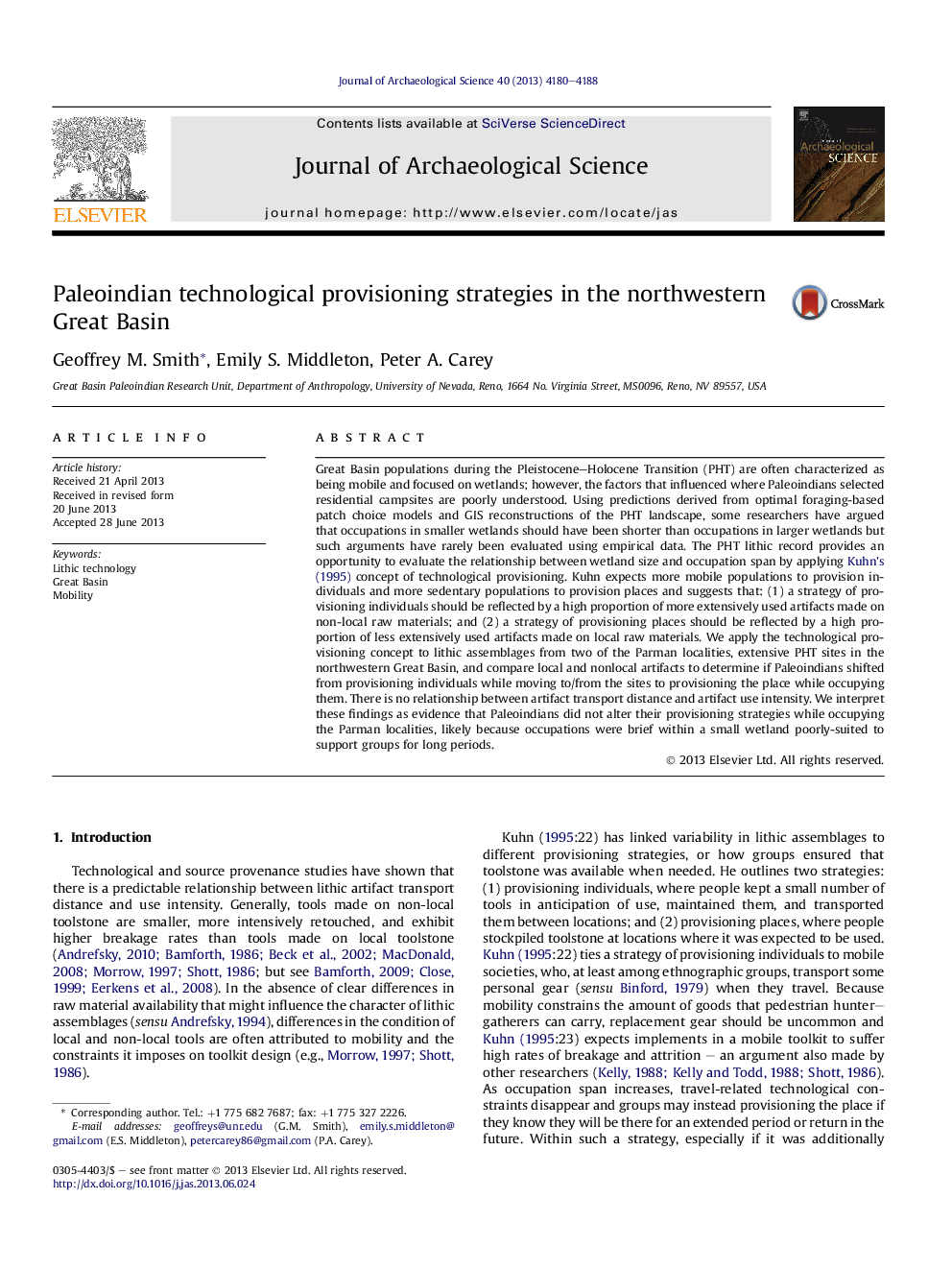| کد مقاله | کد نشریه | سال انتشار | مقاله انگلیسی | نسخه تمام متن |
|---|---|---|---|---|
| 7443802 | 1483920 | 2013 | 9 صفحه PDF | دانلود رایگان |
عنوان انگلیسی مقاله ISI
Paleoindian technological provisioning strategies in the northwestern Great Basin
ترجمه فارسی عنوان
استراتژی های تدارکاتی فناوری پالئوئیدی در حوضه ی بزرگ شمال غربی
دانلود مقاله + سفارش ترجمه
دانلود مقاله ISI انگلیسی
رایگان برای ایرانیان
کلمات کلیدی
تکنولوژی لیت، حوضه بزرگ تحرک،
موضوعات مرتبط
مهندسی و علوم پایه
مهندسی مواد
دانش مواد (عمومی)
چکیده انگلیسی
Great Basin populations during the Pleistocene-Holocene Transition (PHT) are often characterized as being mobile and focused on wetlands; however, the factors that influenced where Paleoindians selected residential campsites are poorly understood. Using predictions derived from optimal foraging-based patch choice models and GIS reconstructions of the PHT landscape, some researchers have argued that occupations in smaller wetlands should have been shorter than occupations in larger wetlands but such arguments have rarely been evaluated using empirical data. The PHT lithic record provides an opportunity to evaluate the relationship between wetland size and occupation span by applying Kuhn's (1995) concept of technological provisioning. Kuhn expects more mobile populations to provision individuals and more sedentary populations to provision places and suggests that: (1) a strategy of provisioning individuals should be reflected by a high proportion of more extensively used artifacts made on non-local raw materials; and (2) a strategy of provisioning places should be reflected by a high proportion of less extensively used artifacts made on local raw materials. We apply the technological provisioning concept to lithic assemblages from two of the Parman localities, extensive PHT sites in the northwestern Great Basin, and compare local and nonlocal artifacts to determine if Paleoindians shifted from provisioning individuals while moving to/from the sites to provisioning the place while occupying them. There is no relationship between artifact transport distance and artifact use intensity. We interpret these findings as evidence that Paleoindians did not alter their provisioning strategies while occupying the Parman localities, likely because occupations were brief within a small wetland poorly-suited to support groups for long periods.
ناشر
Database: Elsevier - ScienceDirect (ساینس دایرکت)
Journal: Journal of Archaeological Science - Volume 40, Issue 12, December 2013, Pages 4180-4188
Journal: Journal of Archaeological Science - Volume 40, Issue 12, December 2013, Pages 4180-4188
نویسندگان
Geoffrey M. Smith, Emily S. Middleton, Peter A. Carey,
